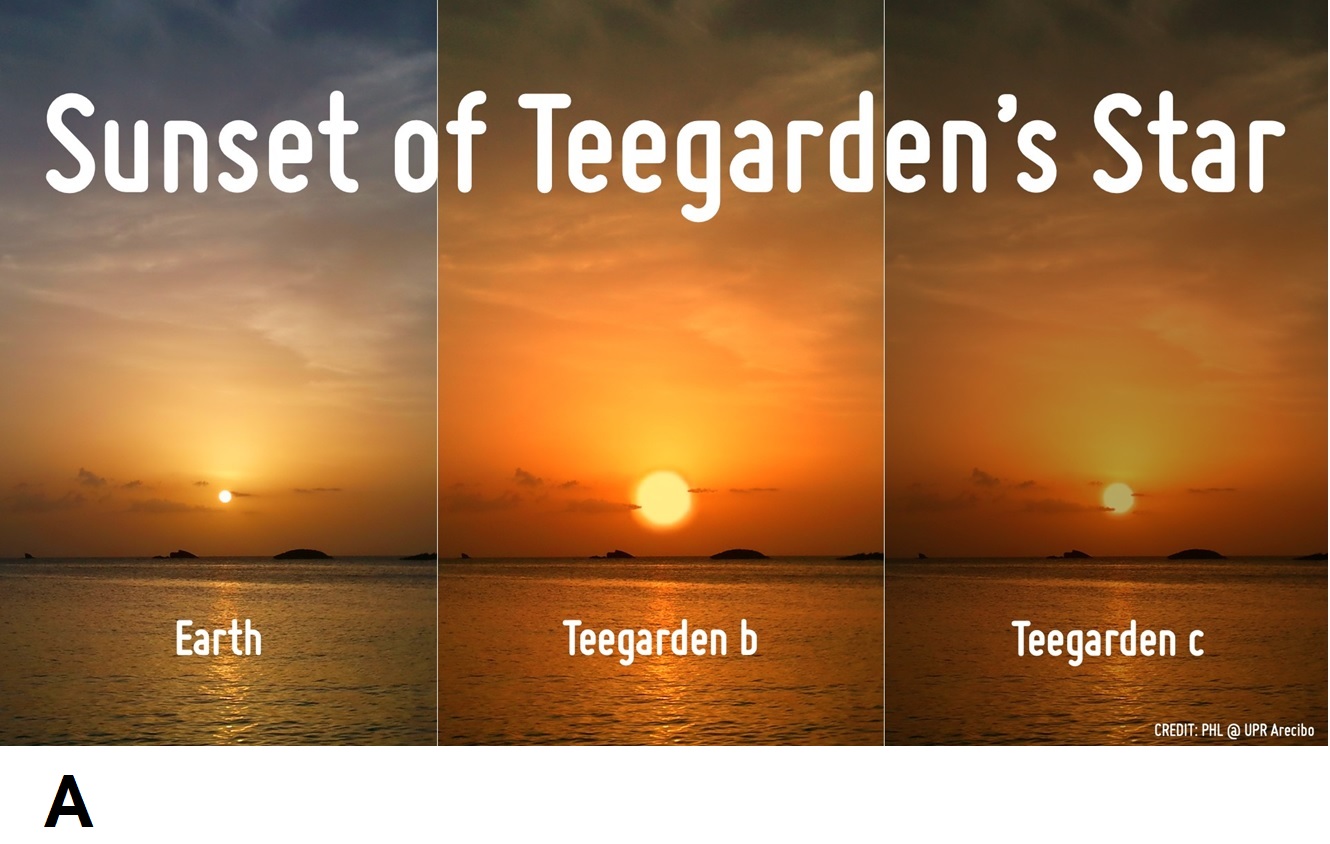
18 Jun 2019
Teegarden's Star is the 24th nearest star system to our own Solar System and the nearest fourth with potentially habitable planets, after Proxima Centauri, Tau Ceti, and Luyten's Star. It is also the closest with multiple small planets in the habitable zone, with similar insolations as our Earth and Mars.
The innermost planet Teegarden b has a 60% chance of having a temperate surface environment, that is temperatures between 0° to 50°C. Surface temperature should be closer to 28°C (2) assuming a similar terrestrial atmosphere but could be higher or lower depending on its composition.
Teegarden b is the planet with the highest Earth Similarity Index (ESI) discovered so far, which means that it has the closest mass and insolation to terrestrial values, albeit we only know its minimum mass (3). However, how this translates to habitability depends on many other factors, especially since this planet orbits a red dwarf star.
Red dwarf star are known to emit strong flares that might erode the atmospheres of planets during their lifetime. Teegarden b should be tidally locked and could even be devoid of an atmosphere or water depending on its thermal evolution.
The outermost planet Teegarden c only has a 3% chance of having a temperate surface environment. Surface temperature should be close to -47°C (2) assuming a terrestrial atmosphere, similar to the temperatures of Mars.
Teegarden's Star is observable from the Arecibo Observatory. Its proximity makes it an excellent candidate for studies of the activity and plasma environment around this star in the radio spectrum, which might provide more information about the past and current space environment experienced by its planets.
Both planets were added to the Habitable Exoplanets Catalog together with K2-296 b, one of 18 planets recently discovered by the K2 mission. Teegarden b and c are part of the top 19 know planets that might support habitable environments. The catalog lists up to 52 potentially habitable planets out of nearly 4000 known planets.
Notes:
(1) The habitable zone as defined by Kopparapu et al. (2014).
(2) For Teegarden b Tsurf = 28 ± 45 °C and for Teegarden c Tsurf = -47 ± 34 °C (90% confidence level). Both temperature estimates are assuming an Earth-like atmosphere around a M-dwarf (Méndez & Rivera-Valentín, 2017; and Méndez et al., 2019 in preparation).
(3) The Earth Similarity Index (ESI) as defined by Dirk Schulze-Makuch et al. (2011) and explained here.
[Image]
(A) Zechmeister et al. (2019) report as part of the CARMENES project the discovery of two potentially habitable planets around Teegarden's Star, an old nearby red dwarf star 12 light-years away in the Aries constellation. Both planets have minimum masses similar to Earth and orbit within the star's habitable zone (1).
(B) Top 19 potentially habitable exoplanets, sorted by distance from Earth.
(C) Top 19 potentially habitable exoplanets, sorted by similar size and insolation to Earth.
